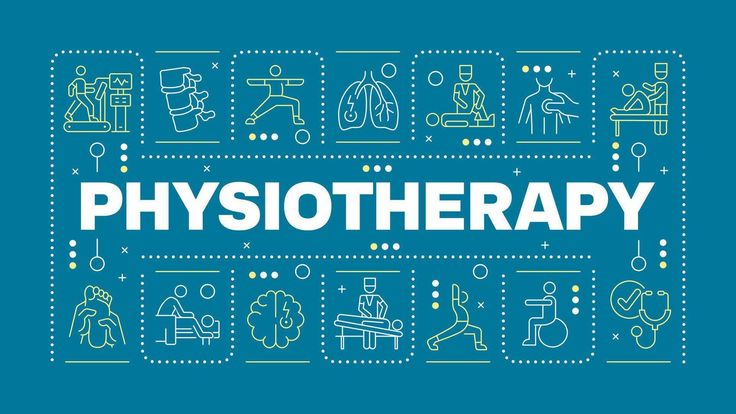
How Physiotherapy (PT) Can Transform Your Health in 2025
Jul 14, 2025 0 Views
How Physiotherapy (PT) Can Transform Your Health in 2025 – Treatments, Benefits & Finding the Best Therapists Near You
Physiotherapy (PT), also known as physical therapy, is a game-changer for pain relief, injury recovery, and overall wellness. Whether you're an athlete dealing with a sports injury, an office worker with chronic back pain, or someone recovering from surgery, a skilled PT doctor or physical therapy assistant can help you move better, reduce pain, and enhance your quality of life.
In 2025, advancements in physiotherapy—such as AI-driven rehab programs, wearable motion sensors, and virtual reality-assisted therapy—are making treatments more effective than ever. This blog will explore:
✔ What physiotherapy (PT) really is
✔ Top treatments in 2025 (manual therapy, kinesio taping, electric shock therapy, and more) ✔ How to find the best "therapy near me" (online PT vs. in-person clinics)
✔ Who benefits most from PT? (athletes, seniors, chronic pain sufferers, and more)
✔ Why 2025 is the best time to start PT (tech advancements, insurance coverage, and non-surgical options)
What is Physiotherapy (PT)?
Physiotherapy (or DPT – Doctor of Physical Therapy) is a science-backed medical field that focuses on restoring movement, reducing pain, and preventing disability without relying on medications or surgery.
A licensed PT doctor or therapist uses a combination of:
-
Exercise therapy (strengthening & stretching)
-
Manual therapy (hands-on joint & muscle techniques)
-
Electrotherapy (TENS, EMS, ultrasound)
-
Education & lifestyle modifications (posture correction, ergonomic advice)
Who Needs Physiotherapy?
Physiotherapy isn’t just for athletes or post-surgery patients. It can help:
-
Office workers with neck pain, back stiffness, or carpal tunnel syndrome
-
Seniors struggling with arthritis, balance issues, or mobility decline
-
Chronic pain sufferers (sciatica, fibromyalgia, migraines)
-
Postpartum women recovering from pelvic floor weakness or diastasis recti
-
Children with developmental delays or sports injuries
Top Physiotherapy Treatments in 2025
1. Manual Therapy (Hands-On Healing)
This technique involves joint mobilizations, soft tissue massage, and myofascial release to reduce stiffness and improve blood flow.
Best for:
-
Lower back pain (disc herniation, sciatica)
-
Frozen shoulder (adhesive capsulitis)
-
Neck pain & headaches (cervicogenic headaches)
2. Kinesio Taping (Sports & Injury Recovery)
Unlike rigid athletic tape, kinesio tape is stretchy and supports muscles without restricting movement.
How it helps:
-
Reduces swelling (lymphedema taping)
-
Corrects posture (scapular taping for rounded shoulders)
-
Supports weak muscles (ACL recovery, rotator cuff injuries)
3. Electric Shock Therapy (EMS & TENS)
-
TENS (Transcutaneous Electrical Nerve Stimulation) – Blocks pain signals naturally (great for chronic back pain, arthritis).
-
EMS (Electrical Muscle Stimulation) – Strengthens weak muscles after surgery or stroke.
New in 2025: Wearable EMS devices that sync with smartphone apps for personalized muscle training.
4. AI & Virtual Reality (VR) Assisted PT
-
AI-powered motion tracking analyzes movement patterns to prevent injuries.
-
VR rehab games make exercises engaging for stroke patients & kids.
5. Online PT (Tele-Rehab)
Virtual physiotherapy is booming in 2025, offering:
-
Live video consultations with licensed PTs
-
Customized home exercise programs via apps
-
Real-time movement correction using AI
Perfect for: Busy professionals, rural patients, and post-surgery follow-ups.
6. Multisystemic Therapy (Holistic PT Approach)
Combines physiotherapy with nutrition, mental health support, and sleep optimization for conditions like:
-
Diabetes & obesity-related pain
-
Post-heart attack rehabilitation
-
Long COVID recovery (fatigue, breathing issues)
How to Find the Best "Therapy Near Me"
1. Check Credentials
-
Look for a DPT (Doctor of Physical Therapy) or licensed Physical Therapist (PT).
-
PT assistants can also provide care under supervision.
2. Read Reviews & Testimonials
Search "physical therapy near me" on Google, Yelp, or Healthgrades to compare patient experiences.
3. Ask About Specializations
-
Sports injuries? Find a sports PT specialist.
-
Post-surgery rehab? Choose a orthopedic PT clinic.
-
Pelvic floor issues? Look for a women’s health PT.
4. Consider Online PT (Convenient & Affordable)
Many top clinics now offer tele-rehab, which is ideal for:
-
Follow-up sessions
-
Chronic pain management
-
Remote patients without local PT access
5. Verify Insurance Coverage
In 2025, more insurance plans cover PT, but always confirm before booking.
Why 2025 is the Best Time to Start Physiotherapy
1. Cutting-Edge Technology
-
Wearable motion sensors track recovery progress.
-
AI exercise apps adjust rehab plans in real-time.
-
Robot-assisted gait training helps stroke patients walk again.
2. Expanded Insurance Coverage
Many Medicare and private insurance plans now cover more PT sessions for chronic conditions.
3. Non-Surgical Pain Relief
PT can help avoid risky surgeries for:
-
Rotator cuff tears
-
Meniscus injuries
-
Spinal stenosis
4. Preventative PT is on the Rise
More people are using PT before injuries happen—especially athletes and desk workers.
Final Thoughts: Don’t Wait – Start PT Today!
Physiotherapy in 2025 is more advanced, accessible, and effective than ever. Whether you need: ✔ Pain relief (back, neck, joint pain) ✔ Post-surgery rehab (knee replacement, ACL recovery) ✔ Improved mobility (seniors, stroke patients) ✔ Injury prevention (athletes, gym-goers)
Take action now:
Search "PT near me" and book a consultation.
Try online PT if you prefer home sessions.
Ask about 2025’s latest treatments (VR rehab, AI-guided exercises, kinesio taping).
Your future self will thank you!
FAQs About Physiotherapy (PT)
Q: What’s the difference between a PT and a DPT? A: A DPT (Doctor of Physical Therapy) has a doctoral degree, while a PT assistant works under supervision.
Q: Does electric shock therapy (TENS/EMS) hurt? A: No! TENS feels like a gentle tingling, while EMS causes mild muscle contractions.
Q: How many PT sessions will I need? A: Typically 2-3 sessions per week initially, then tapering as you improve.
Q: Can I do PT at home? A: Yes! Many therapists prescribe home exercises, and online PT is a great option.
Ready to start? Search "physical therapy near me" today!




